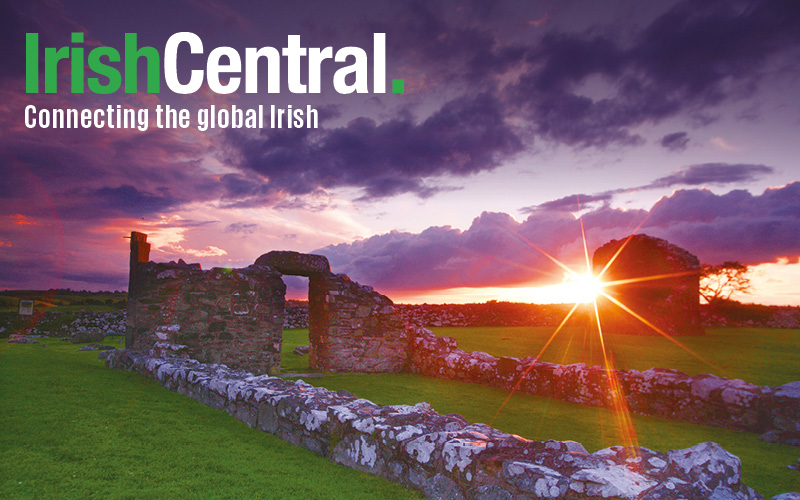An excerpt from a newly published anthology, The Write Irish of New York, including writings from Colum McCann, Mary Pat Kelly, Malachy McCourt, Dan Barry, and Colin Broderick.
The Writing Irish of New York was published by Lavendar Ink / Diálogos in 2018. Among the writers in the anthology are Colum McCann, Mary Pat Kelly, Malachy McCourt, Honor Molloy, Dan Barry, Maura Mulligan and Colin Broderick, who is also the editor.
Colin was raised Irish Catholic in Northern Ireland and he came to New York when he was 20. He's written two memoirs, That's That about his childhood and Orangutan, which is about his life in New York.
In The Writing Irish of New York, he has put together an eclectic collection of the Irish and Irish-American experience. Whenever I open the book, I think of this:
"There's no worth to a story without an author."
- Irish proverb
Read more: A deadly “great blaze” the Spanish flu pandemic of 1918
Here is an excerpt from my essay in the book:
Brooklyn, Writer
Montague Terrace is a narrow, tree-dark street lined with brownstones. It is in Brooklyn Heights, one block removed from the promenade, a walkway above the Brooklyn-Queens Expressway. Step on to the promenade there is the Manhattan skyline. There is the Brooklyn Bridge.
I grew up in Midwood, the daughter of a New York City firefighter and a nurse. We lived twenty minutes from the Junction, where Flatbush and Nostrand Avenues meet. Brooklyn College is there. My high school guidance counselor suggested I apply. Hell no, I thought. I’m not going to college in the Junction. Instead, I went to Marist College in the Hudson Valley. After school, I imagined, I’d find a small town, verdant and vibrant, with company and solitude in equal measures. Yet for years, I lived on Long Island, working stultifying jobs, writing a novel on weekends.
Then I read an article about writers ‘flocking’ to Park Slope. What an odd joke. Moving to Brooklyn—on purpose? But it was true. It was a thing: the Brooklyn Writer. I guess I’ll go back, I thought, genuinely annoyed. But by then, if I’d heard writers were moving to Narnia, I would have started knocking on the backs of wardrobes.
In 2005, after twelve years away, I took an apartment on 7 Montague Terrace, a five-floor walk-up with a single-window and no oven. Since I’d come back to write, not cook, it was perfect.
Read more: How an Irish book tour transformed Frederick Douglass
***
On Friday and Saturday nights, I quit writing at 10 pm to visit Heights Books before its eleven o’clock closing. Cramped, lit like twilight. At the end of each aisle stood a stack of to-be-shelved books, some as high as my waist. Those of us browsing moved carefully around them, book lovers turned nimble as dancers, breathing in the scents of dust and paper.
***
Late one cloudy autumn afternoon, I went to the CVS on the corner of Love Lane, where Sarah DeBevoise, a beauty with many suitors, lived more than a century ago. I was nearly home when the downpour began, and I dashed beneath scaffolding on the corner of Pierrepoint Street. A group came running off the promenade and sheltered with me, Italian, college-aged, drenched, and laughing. They began to sing. The chorus rose into the storm, fierce as light.
***
During my time on Montague Terrace, I ran every evening after work, when I should have been at this reading or that one, out mingling with the borough’s vibrant literary community, forging the connections I’d returned to find. But, turns out, I didn’t come to Brooklyn to find my voice. It is my voice.
***
I began my jog on the promenade. In every season, tourists stood at its iron gate, staring across the East River at Manhattan. Always a few were pointing, their fingers twitching like a metronome as they tried to discern where the towers had stood. Sometimes, I considered stopping, taking their wrists, gently moving their arms left or right. There. They were there. Because if you know where to look, if you know-how, you can see them still.
But I kept going, down the length of the promenade, through Cadman Park, then under the overpass, up the stone stairs and onto the Brooklyn Bridge. Winter evenings, I’d have it to myself.
Men, many of them Irish, died during its construction. The widow of one leaped to her death from the bridge. In 1883, twelve people were crushed in a stampede caused by a rumor that it was about to collapse. For the many of the living who fled the city on a blue and yellow Tuesday morning turned to ash, the bridge was the only escape. Three-hundred and forty-three firefighters were killed. One-hundred and forty-six were members of the FDNY's Emerald Society. One-third of all first responders killed either lived or worked in Brooklyn. In Googling the number of Brooklynites who died, I've found 'over 300' and "about 270."
Is the bridge haunted? I don’t know. This is what I know:
If Brooklyn is the Borough of Churches, then the bridge is its cathedral. The bridge is most beautiful at dusk. The bridge cannot save everyone. The bridge will always be the way home.
Read more: Wrong to throw dirt at Irish American author Jeanine Cummins
This article was submitted to the IrishCentral contributors network by a member of the global Irish community. To become an IrishCentral contributor click here.




Comments